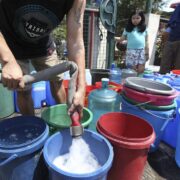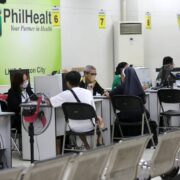An unfinished revolution

Exactly 127 years ago today, revolutionary general Emilio Aguinaldo declared the country’s independence from 300 years of Spain’s colonial rule, marking a turning point in Philippine history. But while reclaiming the country’s sovereignty has since been celebrated as the end of struggle against a foreign power, there’s an unfinished battle that Filipinos continue to wage against a formidable foe: poverty. Recent reports and surveys confirm what many Filipinos already know through their daily grind—that the enemy is ruthless and fast gaining on us.
A survey by the Social Weather Stations (SWS) has indicated that self-rated poverty among Filipinos has steadily increased from 50 percent in January to 55 percent in April. This translates to an estimated 15.5 million poor families in April, about a million more from March figures.
An earlier SWS survey similarly showed that more Filipinos experienced involuntary hunger—or being hungry and having nothing to eat—at least once in the first quarter of the year. Results from the March survey indicated that 27.2 percent of Filipino families, or about 7.5 million households, faced involuntary hunger. The figure is the highest recorded since the COVID-19 pandemic in September 2020 when the hunger rate was at 30.7 percent.
On the labor front, the outlook is as bleak, with the latest Labor Force Survey revealing that the national unemployment rate has increased to 4.1 percent in April, with the Philippine Statistics Authority putting the number of unemployed workers in April at 2.06 million.
Economic survival
The underemployment rate—defined as employed individuals seeking additional work hours or a second job for extra income—also climbed to 14.6 percent in April, which translates to 7.09 million of the country’s 48.67 million employed workers.
The bruising battle for economic survival has hit farmers just as hard, with many of them turning to construction jobs in urban areas as mechanization takes over an increasing number of farms. Over 609,000 agricultural jobs were lost from March 2024 to April 2025, noted Kilusang Magbubukid ng Pilipinas chair Danilo Ramos, adding that about 483,000 of them were linked to rice production that is hobbled by high farming costs, lax importations, and lately, the reduced retail price of rice.
Technology too threatens 14 percent of the total workforce in the Philippines, as they risk being replaced by artificial intelligence or AI. In its December 2024 country report, the International Monetary Fund has warned that some 36 percent of jobs in the Philippines—or four out of 10 jobs—are “highly exposed” to AI, including the business process outsourcing sector.
Strategic defense plan
The prospect of winning this ongoing battle against poverty appears grim, with a government that seems wanting in a strategic defense plan. While President Marcos has weeded out underperforming Cabinet secretaries, saying it was “time to realign government with the people’s expectations,” there has been little follow up to expand social services, trim inflation, and create more jobs.
True, several government initiatives are in place, including Trabaho Para sa Bayan, the enhancement of the Technical, Vocational and Livelihood track in Senior High School, an internship program for new graduates, and various skills training. But their impact has yet to be felt while some programs remain unheard of, a wasted opportunity for government to address an abiding concern at this critical juncture.
In the agri sector, Dr. Norvie Manigbas of the Philippine Rice Research Institute, cautioned against pushing mechanization without regard for regional labor conditions, saying that if left unchecked, the march of machines could roll over rural livelihoods in labor-rich provinces. How about more subsidies for increased agri-production costs including seeds and fertilizer, more technical and updated information on farming, low-cost loans, and emergency recovery funds in times of natural calamities?
Untapped potential
Agritourism should be explored as well, as it holds untapped potential to generate jobs for tour guides, marketing graduates, and hospitality staff. The education department can look into strengthening school-industry collaboration in the curriculum. With more retirees buying leisure farm lots, young people trained to run them can lead to more jobs in the agri sector.
As for workers potentially impacted by AI, the government must invest in digital infrastructure and education to ensure that gains from AI use are widely shared. Local authorities should also enhance the social safety net for workers eased out by AI through reskilling and retraining programs in collaboration with the private sector.
In this unfinished revolution, the equivalent of taking up arms is a sound economic plan where government takes the lead, with civil society and the private sector marching in tandem. After all, we each have a stake to attain freedom—this time, from want and hunger.

















